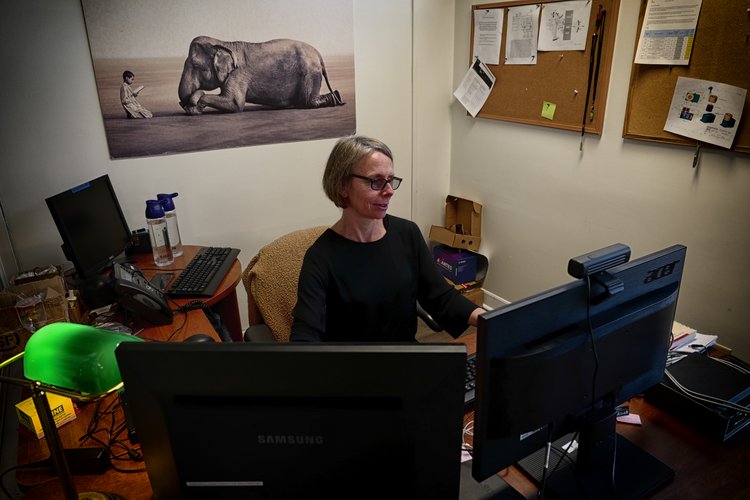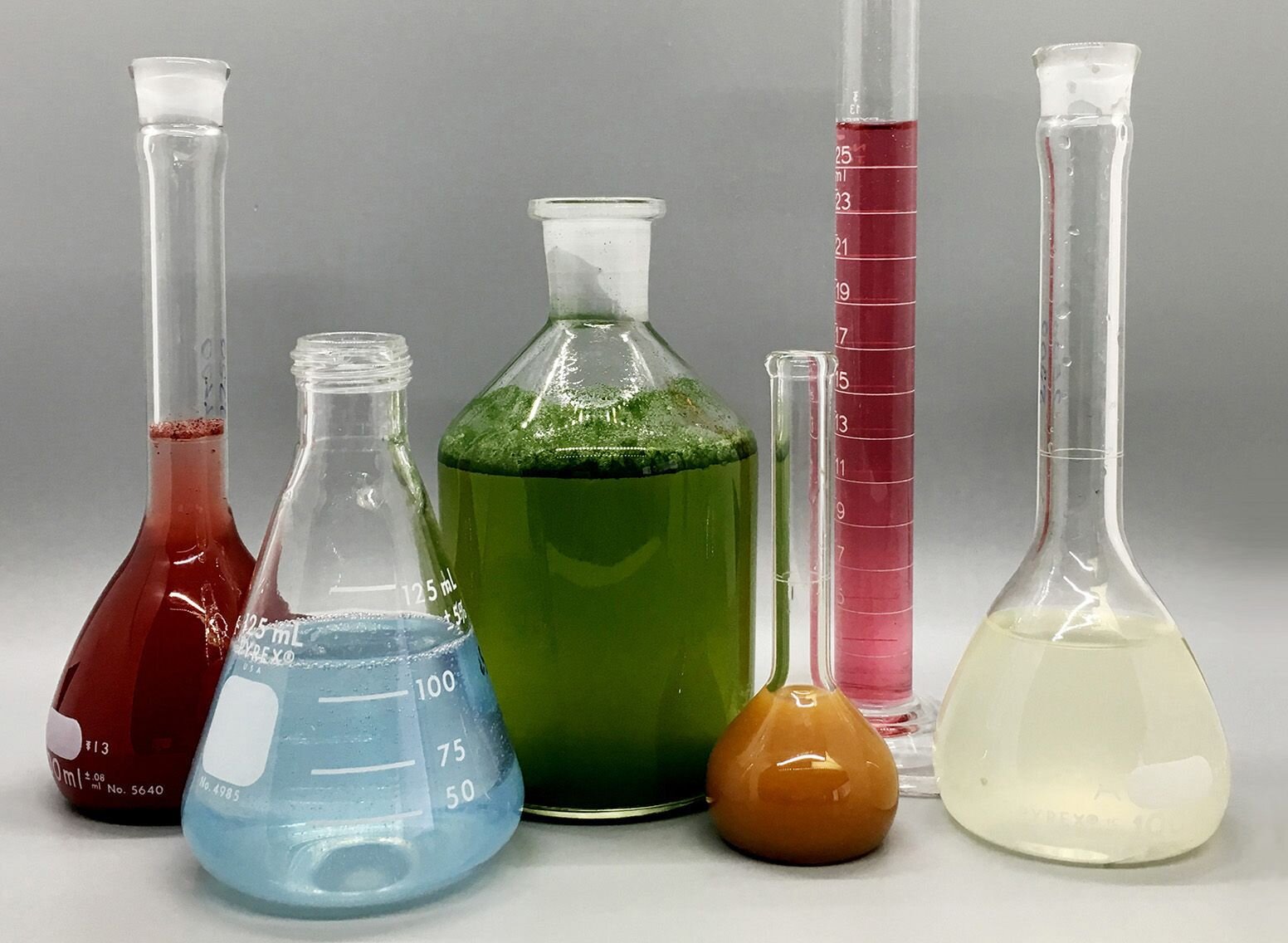The Buzz on Spectrophotometers
The Buzz on Spectrophotometers
Blog Article
The Basic Principles Of Uv/vis/nir
Table of ContentsWhat Does Uv/vis Do?The 6-Minute Rule for Circular DichroismThe Definitive Guide to Circularly Polarized LuminescenceUv/vis/nir Things To Know Before You BuyThe Basic Principles Of Uv/vis/nir A Biased View of Uv/vis/nirThings about Circularly Polarized Luminescence4 Easy Facts About Uv/vis/nir DescribedAll About Circularly Polarized LuminescenceSpectrophotometers Fundamentals ExplainedThe smart Trick of Circular Dichroism That Nobody is Discussing10 Easy Facts About Spectrophotometers ShownAll about Circularly Polarized Luminescence
It is then scanned through the sample and the recommendation solutions. Portions of the occurrence wavelengths are sent through, or reflected from, the sample and the recommendation. Electronic circuits convert the relative currents into linear transmission portions and/or absorbance/concentration worths.The transmission of a reference compound is set as a standard (datum) worth, so the transmission of all other substances are tape-recorded relative to the initial "zeroed" compound. The spectrophotometer then transforms the transmission ratio into 'absorbency', the concentration of specific parts of the test sample relative to the preliminary compound.
Given that samples in these applications are not easily available in large amounts, they are specifically matched to being evaluated in this non-destructive strategy. In addition, precious sample can be conserved by using a micro-volume platform where as low as 1u, L of sample is needed for complete analyses. A short explanation of the treatment of spectrophotometry consists of comparing the absorbency of a blank sample that does not contain a colored substance to a sample which contains a colored substance.
Facts About Circularly Polarized Luminescence Uncovered
In biochemical experiments, a chemical and/or physical residential or commercial property is chosen and the treatment that is used specifies to that residential or commercial property in order to obtain more info about the sample, such as the amount, purity, enzyme activity, and so on. Spectrophotometry can be used for a variety of methods such as determining ideal wavelength absorbance of samples, identifying optimum p, H for absorbance of samples, figuring out concentrations of unknown samples, and figuring out the p, Ka of various samples.: 21119 Spectrophotometry is likewise a helpful process for protein purification and can likewise be used as a technique to create optical assays of a substance.
It is possible to understand the concentrations of a 2 element mixture using the absorption spectra of the standard options of each element. To do this, it is needed to know the termination coefficient of this mixture at two wave lengths and the extinction coefficients of services which contain the recognized weights of the 2 components.

Not known Details About Uv/vis
A lot of spectrophotometers are utilized in the UV and visible regions of the spectrum, and a few of these instruments also run into the near-infrared region also. The concentration of a protein can be estimated by determining the OD at 280 nm due to the existence of tryptophan, tyrosine and phenylalanine (http://go.bubbl.us/df2308/dba3?/New-Mind-Map).
Nucleic acid contamination can likewise interfere. This technique requires a spectrophotometer efficient in measuring in the UV region with quartz cuvettes.: 135 Ultraviolet-visible (UV-vis) spectroscopy includes energy levels that delight electronic shifts. Absorption of UV-vis light excites molecules that are in ground-states to their excited-states. Visible region 400700 nm spectrophotometry is used extensively in colorimetry science.
These curves can be used to evaluate a brand-new batch of colorant to check if it makes a match to specs, e
Traditional visible conventional noticeable area not detect if discover colorant or the base material has product. This can make it challenging to handle color problems if for example one or more of the printing inks is fluorescent. There are 2 significant setups for visual spectrum spectrophotometers, d/8 (round) and 0/45.
Researchers utilize this instrument to determine the quantity of substances in a sample. In the case of printing measurements 2 alternative settings are commonly utilized- without/with uv filter to manage better the result of uv brighteners within the paper stock.
Facts About Uv/vis/nir Revealed
Some applications require little volume measurements which can be carried out with micro-volume platforms. As explained in the applications area, spectrophotometry can be used in both qualitative and quantitative analysis of DNA, RNA, and proteins. Qualitative analysis can be utilized and spectrophotometers are utilized to tape spectra of compounds by scanning broad wavelength areas to determine the absorbance homes (the intensity of the color) of the compound at each wavelength.

An Unbiased View of Spectrophotometers
One major element is the type of photosensors that are available for various spectral regions, but infrared measurement is likewise tough due to the fact that practically whatever produces IR as thermal radiation, specifically at wavelengths beyond about 5 m. Another issue is that many products such as glass and plastic soak up infrared, making it incompatible as an optical medium.
pop over to these guys Recovered Dec 23, 2018. Fundamental Laboratory Approaches for Biochemistry and Biotechnology (2nd ed.). The important guide to analytical chemistry.
Oke, J. B.; Gunn, J. E.
The Basic Principles Of Uv/vis/nir

1021/ac50048a728. ISSN0003-2700. Ninfa AJ, Ballou DP, Benore M (2015 ). Essential Laboratory Methods for Biochemistry and Biotechnology (3, rev. ed.). Hoboken, NJ: Wiley & Sons. p. 77. ISBN9780470924525. OCLC915641828. "Completely Automatic Double Beam - Atomic Absorption Spectrophotometer (AA 8000)". Laboratory Equipment. Labindia Analytical Instruments Pvt. Ltd. "Spectrophotometry Applications and Fundamentals".
How Spectrophotometers can Save You Time, Stress, and Money.
"Applied Spectrophotometry: Analysis of a Biochemical Mix". Biochemistry and Molecular Biology Education. Journal of Biochemistry Education.
The Facts About Circularly Polarized Luminescence Uncovered
U.S. Department of Commerce National Bureau of Standards special publication; 378. Washington, D.C.: U.S. National Bureau of Standards. p. 2. OCLC 920079.
The process starts with a regulated light that illuminates the analyzed sample. In the case of reflection, as this light interacts with the sample, some is taken in or discharged. The emitted light travels to the detector, which is examined, measured, and provided as industry-standard color scales and indices.
All terms are examined over the noticeable spectrum from 400 to 700 nm. In the case of transmission, when the light interacts with the sample, it is either absorbed, shown, or sent.
A Biased View of Uv/vis
Examples include APHA (American Public Health Association) for watercolor and pureness analysis, ASTM D1500 for petrochemical color analysis, edible oil indices used in food, and color analyses of beverages. All terms are evaluated over the visible spectrum from 400 to 700 nm.
Image Credit: Matej Kastelic/ Dr. Arnold J. Beckman and his coworkers at the National Technologies Laboratories initially invented the spectrophotometer in 1940. In 1935 Beckman founded the company, and the discovery of the spectrophotometer was their most ground-breaking creation. Dr. Bruce Merrifield, a Nobel prize-winning biochemist, mentioned that the invention of the spectrophotometer was "most likely the most crucial instrument ever established towards the advancement of bioscience." Before the discovery of the spectrophotometer, chemical analyses took weeks to finish, with 25% precision.
The Best Guide To Circularly Polarized Luminescence
99% accuracy. In time, scientists kept improving the spectrophotometer design to enhance its performance. The UV capabilities of the design B spectrophotometer were improved by replacing the glass prism with a quartz prism. Ultimately, the Design DU was created, containing a hydrogen light and other improvements. This instrument was utilized in industrial laboratories, centers, and chemistry and biochemistry departments.
After 1984, double-beam versions of the gadget were developed. The addition of external software application with the provision of onscreen screens of the spectra came in the 1990s. Usually, a spectrophotometer is comprised of 2 instruments, namely, a spectrometer and a photometer. A fundamental spectrophotometer includes a light source, a monochromator, a collimator for straight beam transmission, a cuvette to place a sample, and a photoelectric detector.
Top Guidelines Of Uv/vis/nir
There are different kinds of spectrophotometers in various sizes and shapes, each with its own function or functionality. A spectrophotometer determines just how much light is reflected by chemical parts. spectrophotometers. It measures the distinction in light intensity based upon the overall amount of light presented to a sample and the amount of beam that goes through the sample solution
A spectrophotometer is utilized to identify the concentration of both colorless and colored solutes in a service. This instrument is used to determine the rate of a response.
Report this page